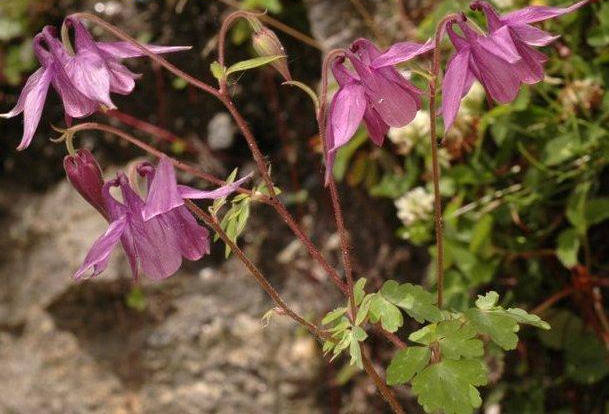
Aquilegia pubiflora
Aquilegia pubiflora, commonly known as the Himalayan Columbine, is a delicate and visually striking flowering plant found in the Great Himalayan National Park (GHNP). Known for its unique bell-shaped flowers with long spurs, this species adds both ecological and aesthetic value to GHNP’s alpine meadows and subalpine slopes.
Botanical Profile
Belonging to the family Ranunculaceae, Aquilegia pubiflora is a perennial herb with purple to bluish-violet flowers that feature backward-extending spurs—a trait characteristic of columbines. The plant usually grows to a height of 30–60 cm and flowers during the late spring to early summer months (May–July).
The flowers are pollinated mainly by long-tongued insects such as bees and butterflies, which are attracted to its nectar-rich, showy blooms.
Habitat in GHNP
In the Great Himalayan National Park, Aquilegia pubiflora flourishes in moist, open slopes, forest margins, and alpine pastures between 2,400 and 3,800 meters above sea level. Notable sighting regions within GHNP include the Tirthan Valley, Rollah, and Shilt meadows, where this plant brightens the landscape during its blooming season.
Ecological Importance
This native wildflower plays a vital role in the pollinator ecosystem, offering nectar to native bees, moths, and butterflies. It also contributes to soil stabilization on high-altitude slopes and acts as an indicator of healthy alpine ecosystems.
| Botanical name | Aquilegia pubiflora |
| Family | Ranunculaceae |
| Description and uses | It is a perennial herb, up to 50 cm tall. Basal leaves are long-petioled, pinnate; pinnules deeply 3-lobed. Flowers are white with purplish or bluish tinge, in loose drooping panicles. Sepals are 5 cm long-acuminate and commonly found at an altitude of 2400-3300m. |
Cultural and Traditional Uses
While Aquilegia pubiflora is primarily appreciated for its ornamental beauty, some local communities have traditionally associated it with aesthetic and spiritual symbolism, often considering it a sacred part of the Himalayan floral tapestry.
Unlike some of the highly exploited medicinal herbs in GHNP, Aquilegia pubiflora is not heavily harvested, but it remains vulnerable to habitat disturbance and grazing pressures.
Conservation Notes
Although not classified as endangered, its habitat is sensitive to climate change and anthropogenic pressure. Conservation within GHNP ensures that such native species are protected within their natural range through habitat preservation and minimal human interference.



